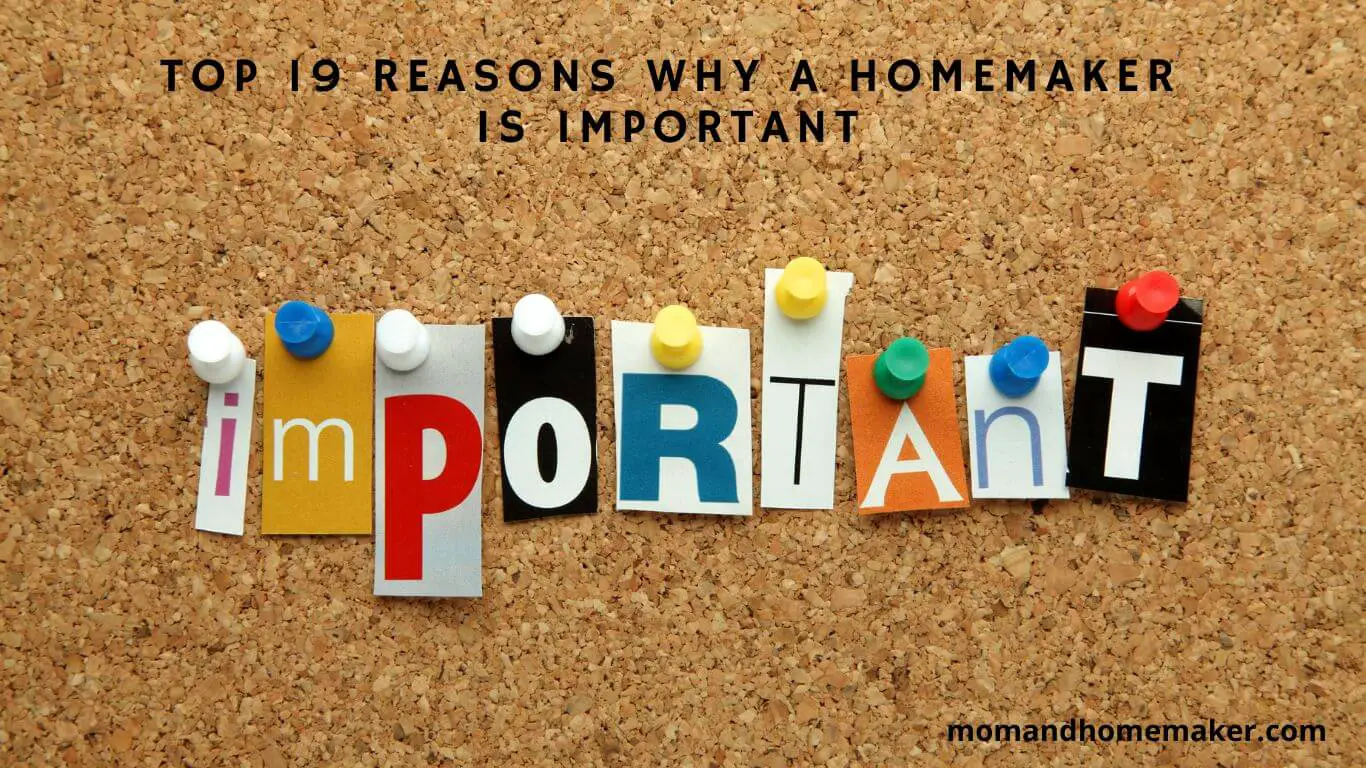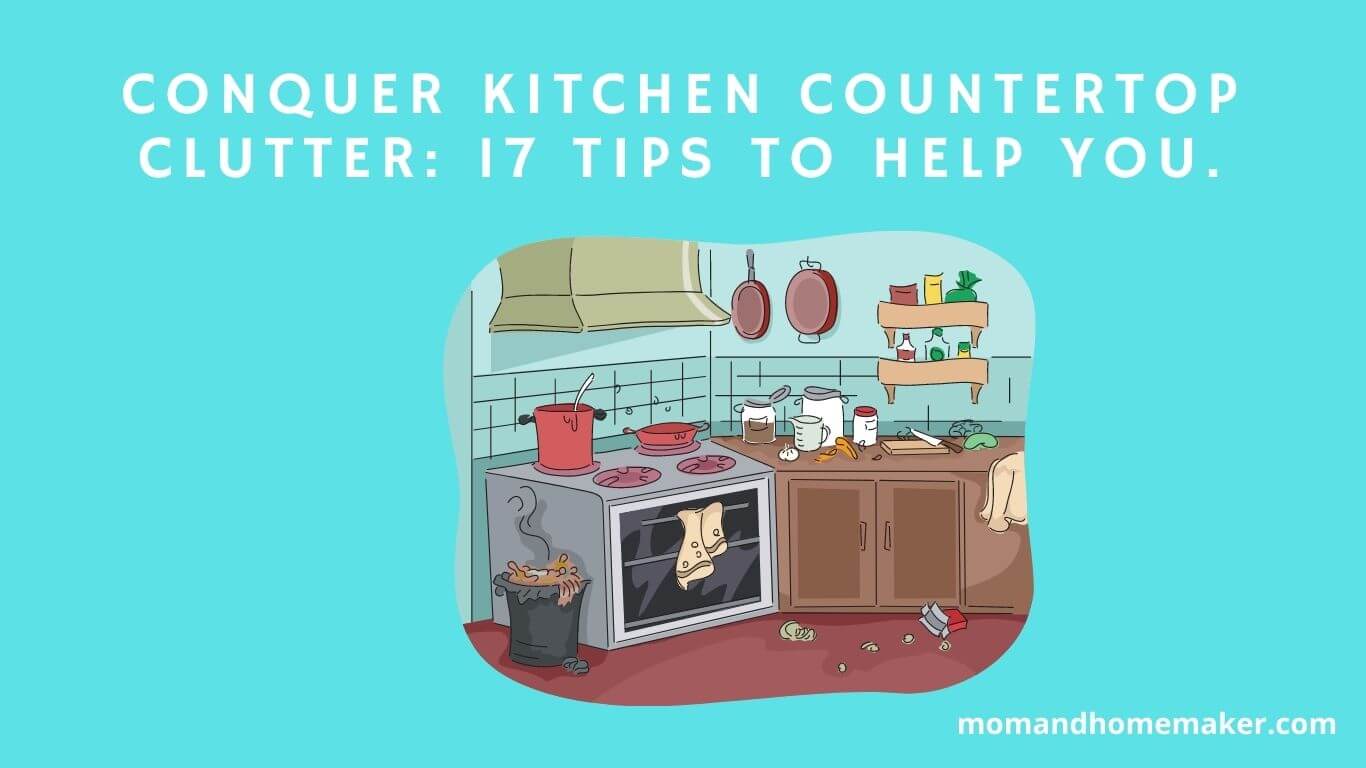Hoarders are notorious for their cluttered and disorganized living spaces. If you or someone you know struggles with hoarding tendencies, organizing the home can seem like an insurmountable task. However, with a bit of patience and determination, it is possible to transform a cluttered space into a tidy oasis.
We’ll discuss practical tips on how to tackle a hoarder’s home and create a more manageable environment. Whether it’s your own home or that of a loved one, these tips will help you create an organized living space that promotes peace of mind and reduces stress.
Table of Contents
13 Tips for Organizing A Hoarder’s Home
1. Recognizing The Signs Of Hoarding
Hoarding can be a complex issue that affects many people. It is important to recognize the signs of hoarding in order to help those who may be struggling with this condition.
One key sign of hoarding is when a person has difficulty throwing away or getting rid of items, even if they are no longer useful or necessary. This can lead to a buildup of clutter and an overwhelming feeling of being surrounded by too much stuff.
Another sign of hoarding is when someone has a strong emotional attachment to their possessions, often feeling anxious or upset at the thought of parting with them. This emotional attachment can make it difficult for them to let go of items, even if they are causing problems in their daily life.
Hoarders may also have trouble organizing their possessions and keeping their homes clean and tidy. Recognizing these signs is only the first step in understanding how to help someone who struggles with hoarding.
2. Understanding The Psychology Of Hoarding
Hoarding is not just a physical problem; it stems from underlying mental and emotional issues. Often, hoarders struggle with anxiety or depression and use their possessions as a coping mechanism. They may also have experienced trauma in their past, leading them to attach sentimental value to objects. It’s important to approach hoarding with empathy and understanding.
When organizing a hoarder’s home, it’s crucial to keep in mind that this is not simply a matter of cleaning up clutter. For a hoarder, parting with possessions can be an incredibly difficult task due to the strong emotional attachment they have developed. It’s essential to take things slowly and work at the pace of the hoarder. Rushing or forcing them will only lead to resistance and potential setbacks.
To effectively help a hoarder organize their home, consider these three steps:
- Develop a plan together: Work collaboratively with the hoarder to create a realistic plan for organizing their living space.
- Categorize items: Help the individual categorize their belongings into groups such as keep, donate, sell, or throw away.
- Seek support: Encourage the individual to seek support from family members or professional therapists who specialize in treating individuals with hoarding tendencies.
Understanding the psychology behind hoarding is crucial when trying to help someone organize their home. By taking things slowly, being empathetic, and utilizing these practical steps, significant progress can be made toward creating a safe and functional living space for those struggling with hoarding tendencies.
3. Seeking Professional Help
If you are helping a hoarder organize their home, one of the best tips is to seek professional help. Hoarding is a complex issue that requires special skills and knowledge to address effectively. Professional organizers who specialize in hoarding can provide invaluable assistance that will help make the process smoother and more successful.
Professional organizers who are trained in dealing with hoarding disorder understand the underlying issues that contribute to this behavior. They have the skills and knowledge needed to create an effective plan for managing clutter, while also respecting the individual’s emotional attachment to their possessions. They can provide practical solutions for decluttering and organizing spaces in a non-judgmental way.
They can offer guidance on how to approach each task in a way that is both sensitive and effective. This expertise helps ensure that progress is made without overwhelming or traumatizing the person receiving help.
4. Creating A Plan Of Action
This step is crucial in making sure that the organizing process goes smoothly and efficiently. Without a plan, you may end up feeling overwhelmed and discouraged.
Start by identifying the problematic areas in the home. Which rooms or spaces need the most attention? Once you have identified these areas, prioritize them based on their level of importance. For example, if the kitchen is cluttered with unnecessary items, it’s best to tackle this area first since it is where food is prepared and stored.
Next, break down each problematic area into smaller tasks. Instead of trying to tackle everything at once, set achievable goals for each day or week. This will help you stay motivated and focused throughout the organizing process.
With a solid plan in place, you’ll be one step closer to achieving an organized and clutter-free home.
5. Setting Realistic Goals
Achieving a clutter-free home is not something that can be done overnight. It requires patience, dedication, and most importantly, realistic goals. Setting unrealistic expectations will only lead to frustration and disappointment in the long run. Instead, break down your cleaning process into manageable steps and celebrate each small victory along the way.
To set realistic goals, start by identifying what you want to achieve and why it matters to you. Perhaps you want to create a more functional living space or reduce stress levels by eliminating clutter. Whatever your motivation may be, keep it in mind as you move forward with your cleaning journey.
Here are some examples of realistic goals to get you started:
- Clear out one room at a time instead of trying to tackle the entire house at once
- Spend 30 minutes each day decluttering instead of dedicating an entire weekend to the task
- Donate or discard five items per week that are no longer useful or bring joy
By setting achievable goals and tracking progress along the way, you’ll be more motivated to continue making positive changes in your home. Remember, the goal is not perfection but rather creating a space that feels comfortable and functional for you and your loved ones.
6. Sorting And Categorizing Items
This step can be overwhelming, but with a bit of determination, it can be done efficiently. Start by gathering several boxes or bins to help with the sorting process. Begin by sorting your items into categories such as clothing, books, electronics, and so on.
As you sort through each item, ask yourself if it is something that you use frequently or if it holds sentimental value. Once you’ve sorted all your items into categories, take a step back and evaluate what you have left. Decide which items are essential to keep and which ones are not.
Remember that letting go of excess items can be liberating and create more space for things that truly bring you joy and serve a purpose in your life.
7. Deciding What To Keep, Donate, Or Discard
Sorting through your belongings is an essential step toward creating a more organized and functional space. When deciding what to keep, donate, or discard, it’s important to take a thoughtful and practical approach.
Start by asking yourself some tough questions – do you really need five pairs of scissors? Or ten coffee mugs? One helpful strategy is to create three piles: one for items you definitely want to keep, one for things that you’re on the fence about, and one for items that can be donated or discarded.
Be ruthless with your decision-making – if you haven’t used something in over a year or it’s broken beyond repair, it’s probably time to let it go. And don’t forget about sentimental items – while they may hold emotional value, they can also contribute to clutter.
As you sort through your belongings, remember that the goal is not only to declutter but also to create a more functional living space. Keep this in mind as you decide what to keep and what to let go of.
8. Creating Storage Solutions
Creating storage solutions is crucial in maintaining a clutter-free environment and preventing future hoarding tendencies.
Here are five ways to create effective storage solutions:
- Use vertical space by installing shelves or hanging organizers
- Invest in multi-functional furniture such as ottomans with hidden storage
- Label everything clearly for easy identification
- Utilize unused spaces like under the bed or behind doors
- Don’t forget about the digital organization for pictures and documents
By implementing these solutions, you’ll be able to declutter your home and maintain a cleaner living environment. It’s important to remember that organization is an ongoing process, so don’t get discouraged if it takes time to perfect.
Remember that maximizing space is key in ensuring that your home remains clutter-free.
9. Maximizing Space
In order to maximize space as a hoarder, you’ll need to find storage solutions, declutter, and reorganize your surroundings. These are discussed in detail below;
Storage Solutions
When it comes to maximizing space in a hoarder’s home, storage solutions are key. One effective strategy is to utilize vertical space by installing shelves or hanging organizers on walls. This not only creates more storage room but also keeps items off the floor and out of the way.
Another storage solution for hoarders is to use furniture that doubles as storage. Examples include ottomans with hidden compartments and bed frames with built-in drawers. These pieces allow for functionality while still maintaining a clutter-free appearance. Hoarders can also explore creative options such as repurposing old suitcases or crates as unique storage containers.
Labeling and categorizing items can make a huge difference in organizing a hoarder’s home. Clear containers and labels help individuals keep track of what they have and where it belongs. Categorizing items by type or frequency of use can also aid in keeping spaces tidy and easy to navigate.
With these simple yet effective storage solutions, hoarders can finally reclaim their homes from clutter and chaos.
Decluttering
It’s important to start by setting a goal for yourself and creating a plan of action. This could involve tackling one room at a time or breaking down each space into smaller sections. Once you’ve established your plan, it’s time to get started.
The first step is to sort through all of your belongings and determine what you want to keep, donate, or discard. As you go through each item, ask yourself if it serves a purpose or brings you joy. If not, it may be time to let it go.
After sorting through everything, it’s important to find a place for each item that will keep things tidy and organized. Utilizing storage solutions such as shelves and containers can help make this process easier.
By taking the time to declutter and organize your home, you’ll create a more peaceful living space that will allow you to focus on what really matters in life.
Reorganizing
Reorganizing involves finding a place for everything so that it is easy to access and maintain. This will not only save time but also keep your living space tidy and clutter-free.
Start by assessing the storage solutions you already have in place. Are they being utilized to their fullest potential? If not, consider investing in additional shelves, containers, or organizers. These can be placed strategically to fit your needs and optimize your space.
When reorganizing, it’s important to remember that efficiency is key. Keep items that are used frequently within reach and store seasonal or less frequently used items in a designated area. This will make it easier to find what you need when you need it without having to search through cluttered spaces.
By implementing these reorganizing tips, you’ll create an organized and functional space that will allow you to live more efficiently. With everything in its place, you’ll have more time to focus on what truly matters – serving others and enjoying all of life’s little moments.
10. Cleaning And Disinfecting The Home
This step is crucial in ensuring a healthy living environment for both you and your loved ones. Begin by removing any trash or debris from the premises.
Once all of the debris has been removed, it’s time to get down to the nitty-gritty of cleaning. Start by dusting all surfaces within the home, including furniture and knick-knacks. Next, use a mixture of water and soap to wipe down walls, cabinets, and countertops. Don’t forget to clean appliances such as stoves, refrigerators, and microwaves thoroughly.
Disinfecting is equally important when it comes to maintaining a healthy home environment. Use an EPA-approved disinfectant spray or wipes to sanitize surfaces that are frequently touched such as doorknobs, light switches, and keyboards. Be sure to also disinfect bathrooms regularly by scrubbing toilets, sinks, and showers with bleach-based cleaners.
By following these steps in cleaning and disinfecting your hoarder’s home, you’ll be well on your way toward creating a healthier living space for all those who reside there.
11. Maintaining Organization
Let’s start by creating a filing system. That’ll make it easy to keep everything in its place. We can also designate storage spaces for stuff we want to keep.
That way, we’ll know exactly where to find it when we need it. It’s important to make sure we stick to the system we set up – otherwise, we’ll be back to square one!
Creating A Filing System
Creating a filing system can provide a solution to these problems and help maintain organization. Start by designating a specific area for all paperwork, such as a desk or filing cabinet.
Sort through the papers and categorize them into different folders or labels based on their purpose or importance. This could include categories such as bills, medical records, and tax documents. Be sure to label each folder clearly and consistently for easy access in the future.
Make it a habit to regularly go through the files and purge any unnecessary documents. This will not only keep your filing system up-to-date and organized but also prevent clutter from accumulating again.
With a little effort and consistency, creating a filing system can greatly improve the overall tidiness of your home.
Designating Storage Spaces
This can include anything from clothes and shoes to kitchen utensils and cleaning supplies. Start by assessing the space you have available and determining which areas would be best suited for specific items. For example, designate a closet or dresser for clothing and shoes, and kitchen cabinets or drawers for utensils and cookware.
Be sure to label each space clearly so that items can easily be returned to their proper place. Regularly go through your storage spaces to purge any unnecessary items and make room for new ones. This will not only help maintain organization but also prevent clutter from building up again. By designating storage spaces for all of your belongings, you can create a more functional and organized home environment.
Remember to assess your available space, label everything clearly, and regularly purge unnecessary items to keep things tidy.
12. Providing Emotional Support
It can be emotionally taxing for both the hoarder and their loved ones. Providing emotional support is just as crucial as decluttering and organizing.
One way to offer emotional support is by being patient and understanding. Hoarding disorder is a complex mental health issue that often stems from traumatic experiences or anxiety. It can take time for the hoarder to feel comfortable letting go of their possessions, so avoid pressuring them into getting rid of things too quickly.
Another way to provide emotional support is by encouraging the hoarder to seek out professional help. A therapist or counselor can help them work through any underlying issues causing their hoarding behaviors. There are support groups specifically for hoarders where they can connect with others who understand what they’re going through.
Remember, organizing a hoarder’s home is about more than just clearing out clutter. It’s about showing compassion and empathy towards someone struggling with a difficult disorder. By offering emotional support along with practical assistance, you can make a real difference in someone’s life.
13. Celebrating Successes And Progress
As you continue to declutter and organize your home, it’s important to take time to celebrate your successes and progress.
Acknowledge the hard work you’ve put in so far and give yourself credit for the steps you’ve taken towards a more organized space. This can be as simple as taking a moment to appreciate a clean countertop or closet or treating yourself to something special as a reward.
Remember that organizing is not a one-time event, but an ongoing process. It’s important to keep track of your progress and celebrate each step along the way. Take before-and-after photos to see the difference you’ve made, or create a checklist of areas you’ve tackled and mark them off as you go.
Recognizing your accomplishments will help motivate you to continue on this journey.
Don’t forget the impact that an organized home can have on those around you. As you continue to make progress, think about how it benefits not only yourself but also your loved ones and guests who visit your home. A tidy space can reduce stress and create a welcoming environment for everyone who enters.
Conclusion
In conclusion, organizing a hoarder’s home is a challenging but rewarding journey. It requires patience, understanding, and commitment. By recognizing the signs of hoarding and seeking professional help, you can create a plan of action and set realistic goals for your loved one.
Remember to clean and disinfect the home while maintaining organization. Emotional support is crucial throughout the process, so celebrate successes and progress along the way.
With determination and empathy, you can help your loved one overcome their hoarding tendencies and create a comfortable living space for them to thrive in. Keep pushing forward, and remember that every small step counts towards the ultimate goal of a clutter-free home.
















